This Greek pea and potato stew is a true classic across the Aegean, and one of my favourite dishes to enjoy in spring. With humble ingredients bound together by plenty of olive oil, it’s perfect for a healthy but delicious midweek meal.
I’ve named this recipe Greek pea and potato stew, though Aegean pea & potato stew would probably be a more appropriate name. While most recipes for this dish appear to be Greek, the dish – as well as the family of dishes it originates from – is in fact common across the Aegean. It’s also an important part of Turkish cuisine.
Lathera & zeytinyağlı – a truly Aegean cooking style worth trying
Greeks refer to this dish as arakas lathera, a literal description of the main ingredient (green peas) and the cooking style (braised in plenty of olive oil). Its Turkish name is basically the exact equivalent using Turkish words and syntax: zeytinyağlı bezelye.
Lathera, or zeytinyağlı in Turkish, is a cooking style where you braise vegetables in plenty of (extra virgin) olive oil until completely tender. In the Arab world, these dishes are known as bil zayt.
This goes against much of conventional wisdom in the West, where just cooked, snappy and brightly coloured vegetables are considered the ideal way of preparing vegetables. That’s certainly the case if you ask most chefs or foodies.
If you’re one of them, let me tell you this: You’re missing out. Big time.
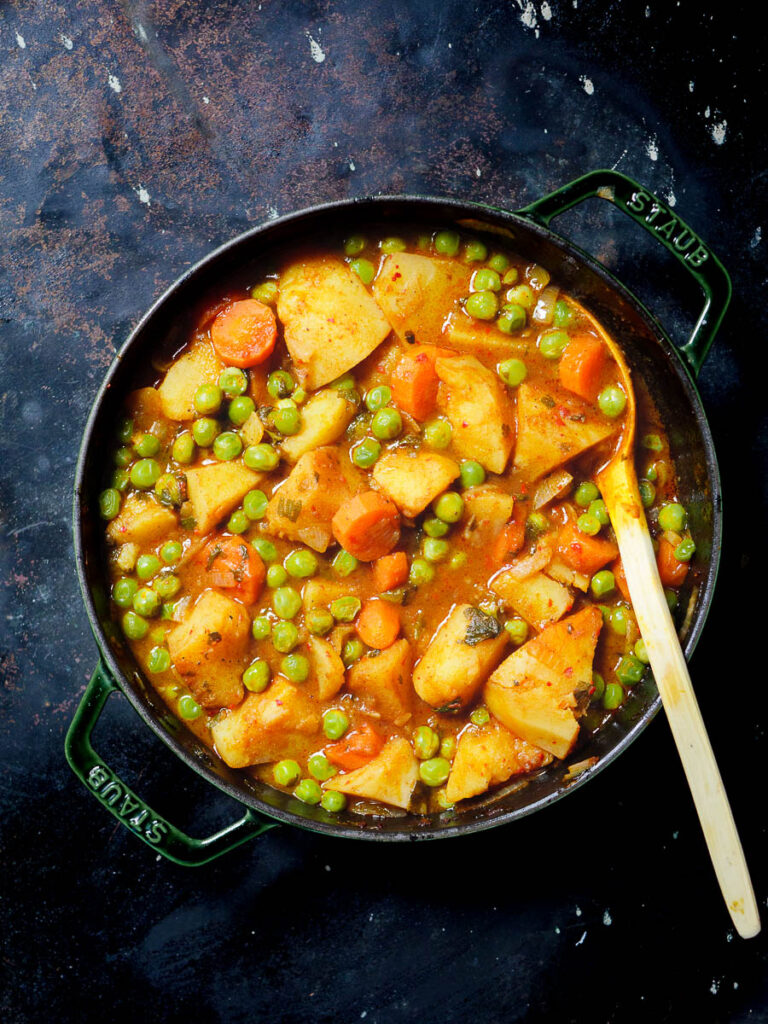
The lathero/zeytinyağlı cooking style certainly dulls the colours, leaving them at a considerable disadvantage in this world of social media likes. But once you bite into a mouthful of perfectly braised vegetables in good quality olive oil, you immediately realise how little that matters.
The soft texture is comforting, the flavours light and delicious. It’s filling and satisfying, but never leaves you feeling stuffed or greasy.
Just what you want from your food in spring and summer.
The perfect recipe for fresh green peas in the pod
These days, Istanbul markets are overflowing with fresh peas in their pods. The season is short, so I tend to buy a lot. What I don’t use immediately, I freeze for those nine or ten months of the year when fresh peas just aren’t available.
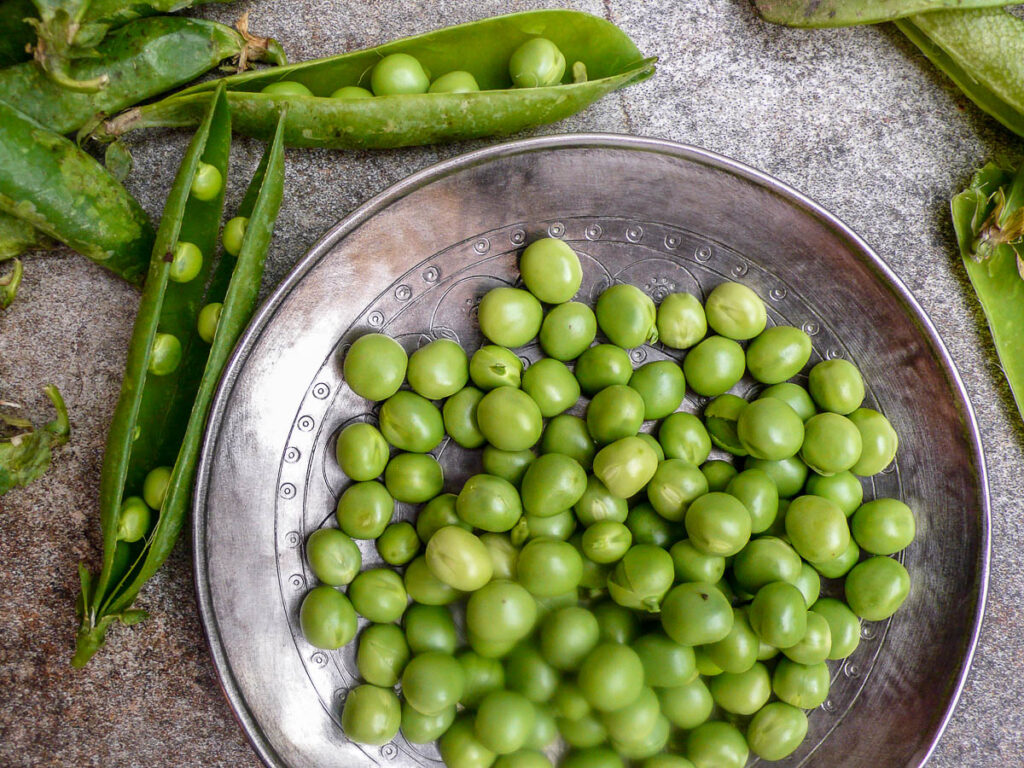
Everything is better in season, however, so I tend to cook a lot with the green peas throughout the spring and early summer. I add them to almost anything for a taste of spring: Simple chicken stews, biryani, vegetable fritters, salads, pastas, starters.
But most of all, I love them in the style described above. Braised in plenty of olive oil. As a supporting ingredient to artichoke.
Or as the main ingredient in its own right.
How to make Greek pea and potato stew with tomatoes
Making this dish is as simple as it is satisfying, following the same rules as other dishes in the same family.
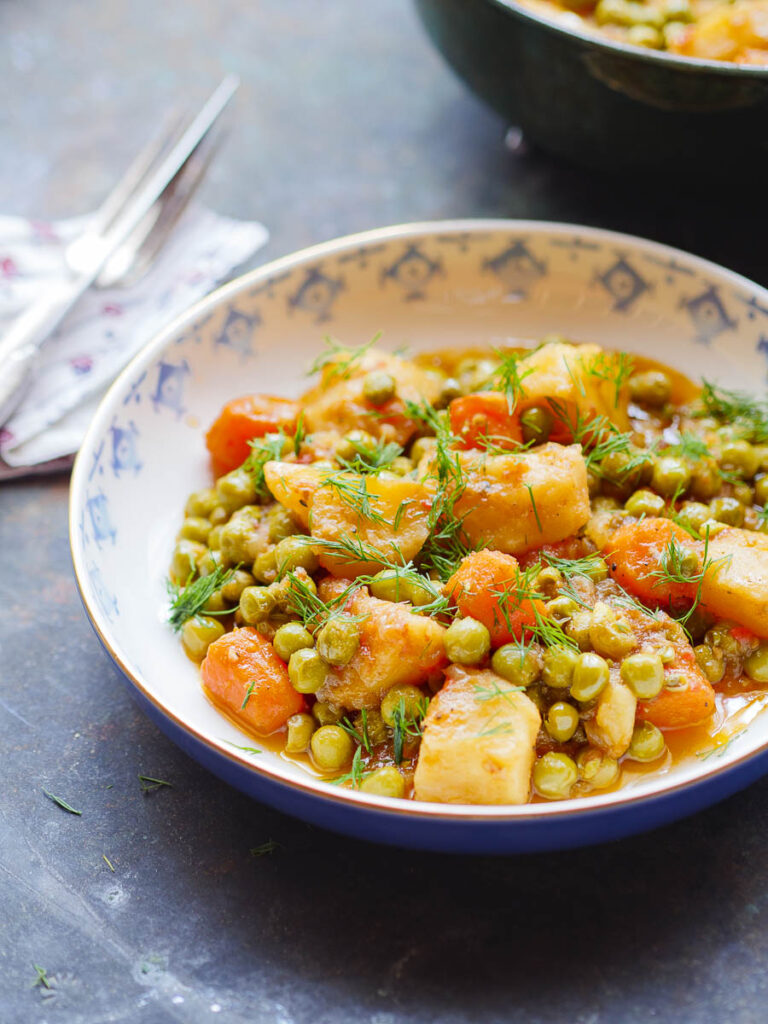
You start with olive oil – plenty of it. Contrary to popular belief, extra virgin olive oil is excellent for cooking. In fact, Greek nanas probably know no other olive oil, and use it from anything from salads to deep frying.
Indeed, Mariana Leivatadaki reminisces of how popular the chips of her family’s restaurant were in her brilliant cookbook Aegean (affiliate link). The secret? They were fried in good quality extra virgin olive oil.
Unlike “regular” olive oil, which is often a blend of oils of varying quality (regardless of what the packaging may claim), extra virgin olive oil will never feel greasy. Even if you use plenty of it.
So my only word of advice when making this dish (or any lathera/zeytinyagli) is this: Use a good quality, mild flavoured extra virgin olive oil.
The rest is easy.
Brown the potatoes a little for extra flavour. Soften the onions until deliciously sweet. Add garlic for flavour and tomatoes for umami. Again, there’s nowhere to hide, so use good fresh tomatoes in season, or good quality tinned tomatoes when they’re not.
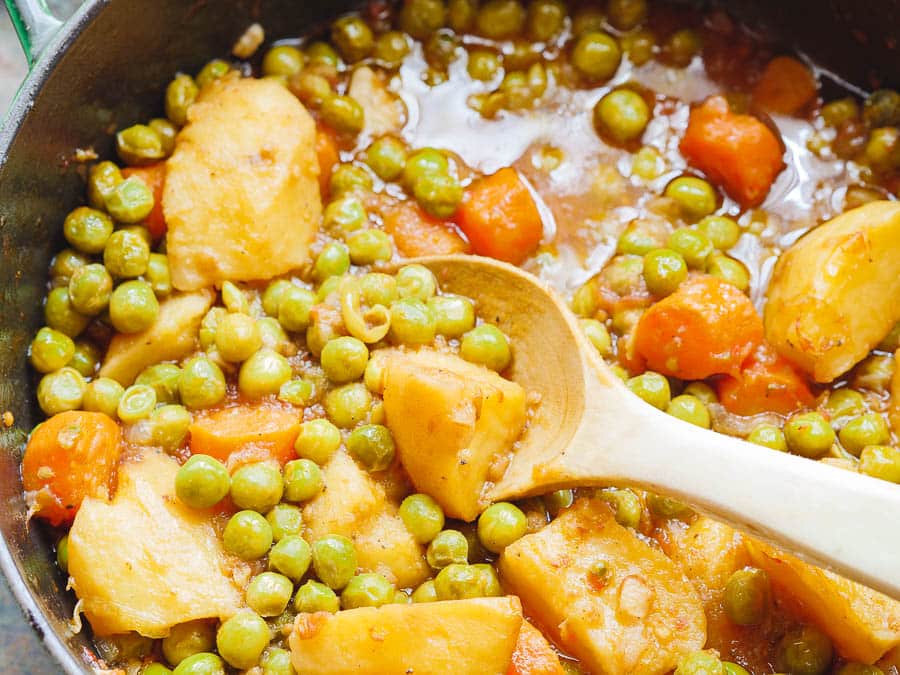
The last, and very important ingredient, is patience. The dish needs a low and slow braise until the vegetables are completely tender. Around 45 minutes total usually hits the spot.
How to serve arakas lathera / zeytinyağlı bezelye
While it can be served hot, arakas lathera are best warm, or even at room temperature.
Since it’s already got a lot of good quality protein, carbs and fats, you don’t actually need very much alongside at all.
Personally, I’m very happy with a good slice or two of bread and a generous dollop of greek yoghurt. You can also serve it with rice or bulgur for an even more substantial meal.
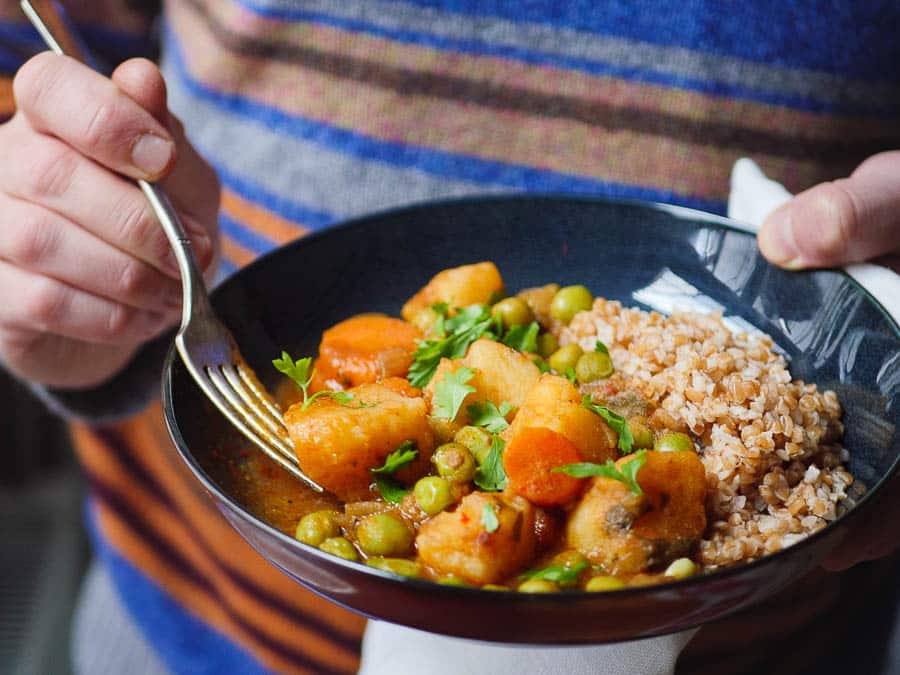
The stew also works well as a side dish alongside fish or chicken.
If you want something fresh with this stew, a simple salad would work well, though I wouldn’t do anything too extravagant with its dressing. A simple squeeze of lemon juice and a good drizzle of extra virgin olive oil would be perfect.
The recipe yields 3-6 servings, depending on whether this is the main or side dish.
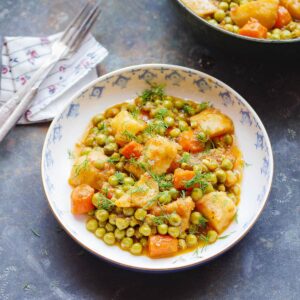
Greek pea & potato stew
Ingredients
- 100 ml olive oil, (I use a mild extra virgin)
- 450 g potato, peeled and cut into large pieces
- 2 medium onion, halved and sliced thinly
- 3 medium (c. 200 g/7 oz total) carrot, cut into chunks
- 3 garlic cloves, thinly sliced
- 400 g tomato, (fresh or canned), chopped or shredded
- 300 ml water
- 1 tsp pul biber (Aleppo pepper), or other chili flakes to taste
- 600 g green peas, fresh or frozen (podded weight)
- 1 handful chopped dill, to garnish (optional)
- salt and pepper
How I make it
- Heat a thick-bottomed pot over medium heat. Fry the potato in the olive oil until starting to colour. Turn every once in a while, but not too often, otherwise it’ll never colour. The potatoes don’t need to be cooked through – they’ll finish cooking in the sauce later. Once coloured, place the potatoes on baking parchment and set aside.
- Fry the onion and carrot in the remaining oil until starting to colour, 10-12 minutes. Stir regularly to ensure it doesn’t burn, but it’s perfectly fine (even preferable) for the onion to get golden here and there.
- Add the garlic and fry for another couple of minutes, then add the tomato, water and pul biber. Season generously with salt and pepper. Mix well, then add the peas and potato. Bring to the boil, then turn the heat to low, put a lid on and leave to simmer until the vegetables are completely tender and the sauce has thickened, 30-40 minutes. If the sauce still looks a little runny after 40 minutes, leave to simmer for a few minutes with the lid off.
- Take off the heat and leave for a few minutes so the stew is warm, but not piping hot. Garnish with a little fresh dill before serving.


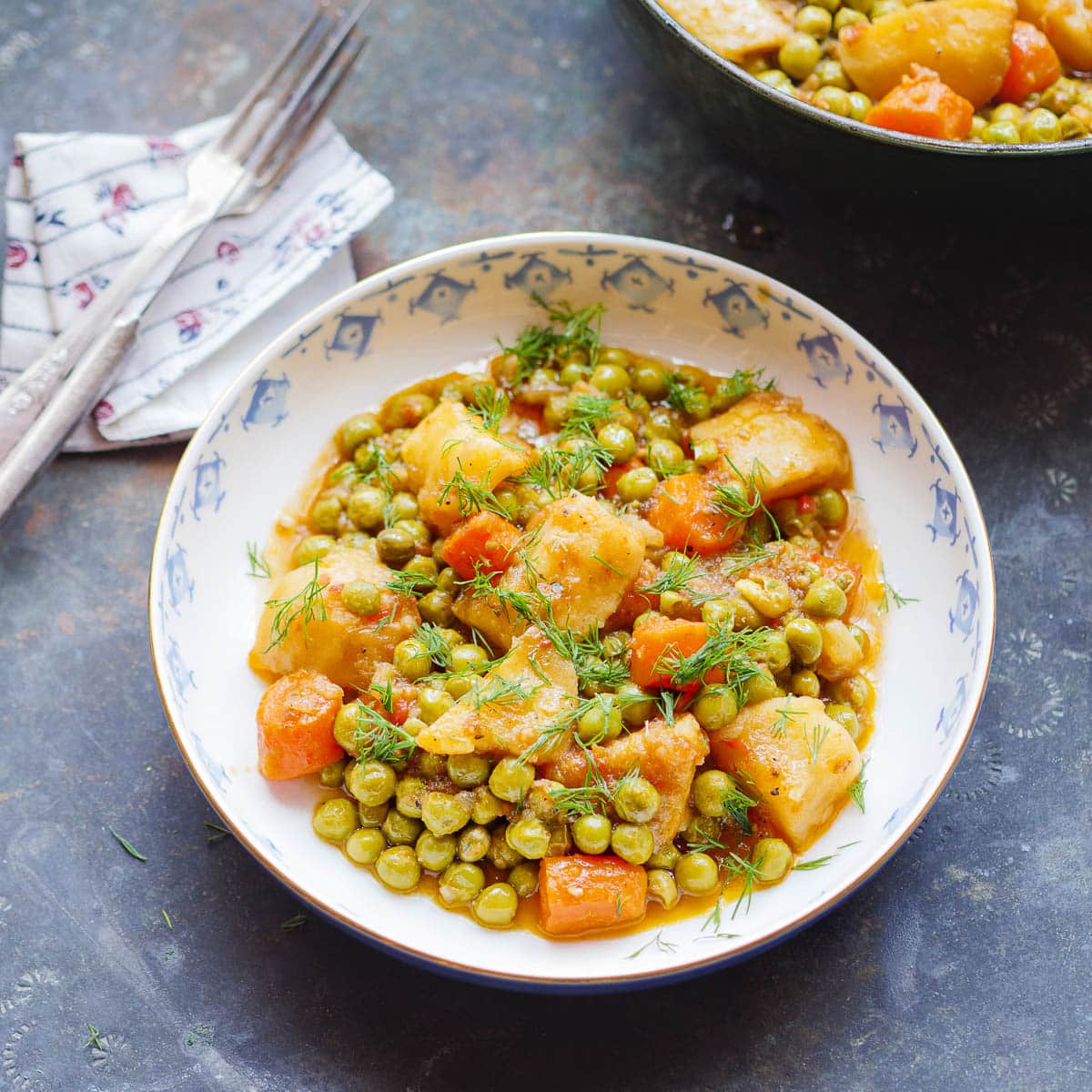


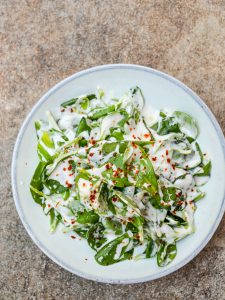
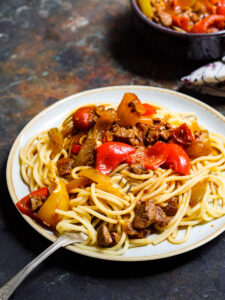
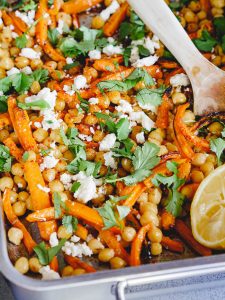





8 Responses
Thank you for your wonderful recipes. I live in South Africa, but spent many years in Turkey with my late husband. I will definitely try the Greek Potato and Pea dish. Looks wonderful. I miss Turkey a lot…especially the food!
Thanks so much for sharing. Hope you’ll enjoy it!
Hi Vidar
I absolutely love reading your posts about Türkiye, about your day to day experiences and of course your recipes!
Thank you for delighting us with all the beautiful and informative things you talk about. You always sound so warm and genuine in your posts, it’s an absolute joy to read!
Reading your posts makes me want to be in Türkiye, I’m missing it heaps!
How wonderful to hear, thank you so much!
Wonderful! A typical lokanta dish around the Turkish Agean. And so well written, my eyes became watery when I could smell and eat the dish just by reading.
Thank you! Glad you enjoyed reading it 🙂
The correct name in Greek is “arakas ladera” not ‘laderos’
Thanks for letting me know!